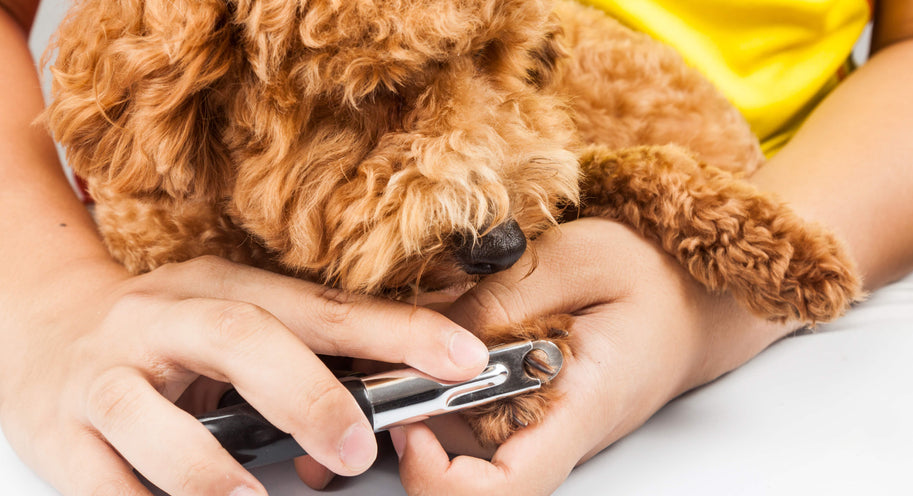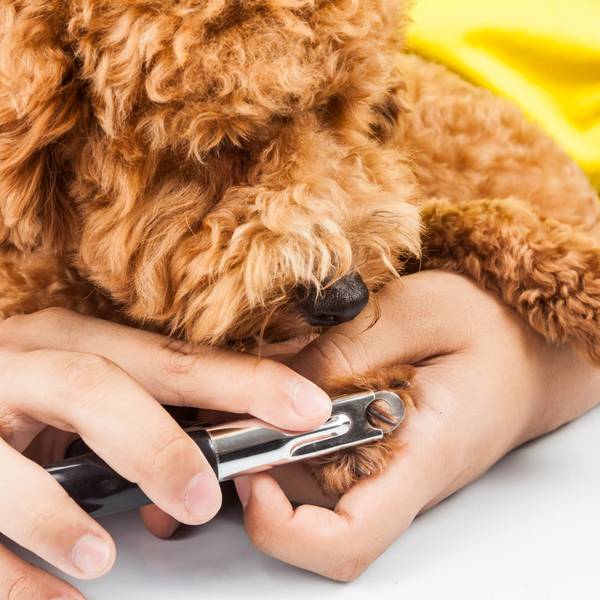Finding yourself to be a little twitchy and nervous whilst trying to trim your dogs nails? It can be a stressful time for both owner and dog to get it done correctly and safely. But no fret! We are here to help you ease the process, so your dog is calm and happy with their freshly trimmed nails!
So why is it so important that we make trimming a regular occurrence for your dog? Dogs’ nails will just keep growing longer and longer, causing the dog pain and discomfort, especially while moving about as when a dog stands and walks, nails that are too long will bend back up into the nail bed and will make the toes push to the sides and make for very sore feet!
Overgrown nails that are left can even lead to bone deformities and damage tendons. It also makes them more prone to break or rip the nails off entirely which we can sure imagine is not a good experience. Dogs who spend excessive amounts of time outdoors and walking/running on hard surfaces such as pavement, will wear their nails down gradually. But these days, there are a lot of suburban or urban dogs who spend a lot more time on softer surfaces such as grass or inside the home. This means more nail trimming sessions. It can also depend on breed, lifestyle and so forth.
A quick over-view of the nail
The canine nail is composed of layers, the ‘outer shell’ part is what we can see. Inside this protective outer shell is a soft inner layer known as the Quick. This inner layer is what contains the blood and nerves. It’s important NOT to cut as far as the quick as this will cause lots of pain for your pooch!
Are my dogs’ nails too long?
With your dog standing in front of you with their front legs under their shoulders, have a look at their nails. If they are touching the ground, then they are too long and it’s time to get trimming! If you can hear your dog’s nails clicking or they start to turn sideways, it’s time for a trim.
How to locate the quick
It would be helpful to first ask for your dog’s paw, preferably outside in the sunlight (as this will help you see better) or in a well-lit area. Take a look at each of their nails. If your dog has light coloured nails, you will be able to see quite easily where the quick is. Dark coloured nails will be a lot more difficult to see as the dark shade of the nail will usually conceal the quick. This makes it even more important to get familiar with the nails to estimate where the quick is located. Grinders may be a better option for dark nail trimming.
TIP: Start handling your dog’s feet & paws from a young age or when you adopt them and bring them home, as this will help desensitise them to the trimming process and avoid fear and anxiety.
What you’ll need
A nail trimming/clipping tool. There are many fantastic nail trimming products on the market and it’s a great idea to invest in a quality pair that will last a long time and you’ll always have a pair handy. You can ask the pet expert at your local Just For Pets store if you need help choosing the correct size.
Remember to cut the dew claw. The DEW Claw is located on the inner side of your dog’s upper paws and it attached to loose skin.
Nails Clippers
Uses sharp blades to remove the tip of the nail. These will need sharpening from time to time to keep them working as efficiently as possible and to limit any pain, as blunt clippers can be painful.
Guillotine trimmer
These trimmers have a hole at the end, in which the dogs nail is inserted. Though can be much faster to use than normal clippers, these can be a little trickier to use as it can sometimes be difficult to thread the nail through the hole precisely from the distance of the end of the dog’s nail.
Grinders
These tools will help grind off the nail which can help give the nail a smoother finish and works well on thick nails.
Time to get trimming!
- Gather your tools – Nail Clippers, Treats and Styptic Powder to help stop the bleeding in case the nail is cut too far back. For successful nail trimming, your dog should be able to sit relatively still to avoid injury. If they are nervous or fidgety, you can try using a LickiMat with something yummy smothered onto it to help destress and keep your dog busy in the process.
- Hold the foot firmly and steady yet gently. Place your thumb on the pad of the toe and your forefinger on top of the skin above the nail. Push your thumb slightly up and backward on the pad to help extend the nail.
- Clip only the tip of the nail. Always cut parallel to the bottom. Check for any bleeding, just in case!
- Treat time! Reward your dog for being a good boy/girl.






